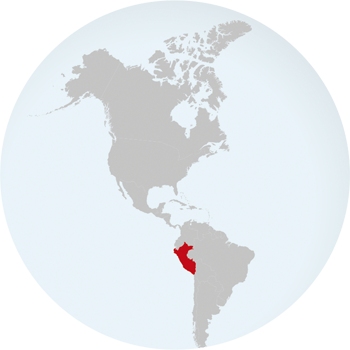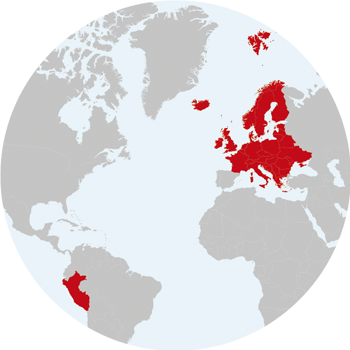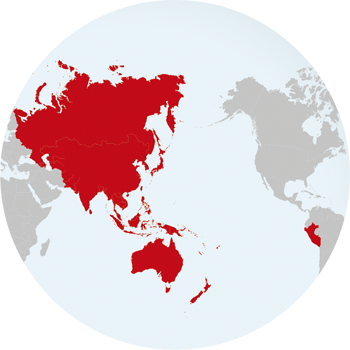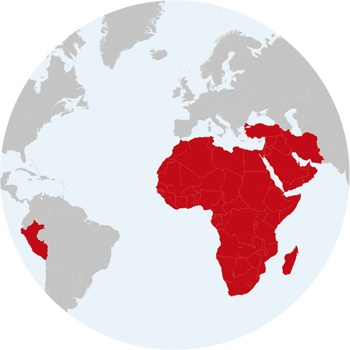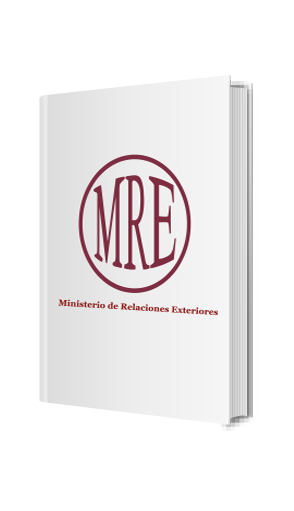Relations with Asia and Oceania
The importance of the Pacific Basin in the international scenario and the consolidation of the Asian countries as economic powers is a fact that the Peruvian Ministry of Foreign Affairs has taken into consideration to define and design its external actions searching greater opportunities of development through the access to new markets, investment resources, transfer of technologies and cooperation in various fields.
The Directorate General of Asia and Oceania is in charge to promote and to defend the interests and objectives of Peru in the political-diplomatic sphere of bilateral relations with the countries of Asia and Oceania, as well as to coordinate with the relevant sectors the participation of Peru within the framework of the Asia Pacific Economic Cooperation (APEC) and in the economic for a of the Pacific Basin.
Asia and Oceania
The Directorate of Asia and Oceania is responsible to promote and to defend the interests and objectives of Peru in the political-diplomatic sphere of bilateral relations with the countries of Asia and Oceania
Peru has achieved relevant objectives, with the main countries of Asia, such as the consolidation of the strategic partners relations, through the signing of Free Trade Agreements with the People’s Republic of China and the Republic of Korea; with Japan, the signing of an Economic Partnership Agreement and the Agreement on the Promotion and Protection of Investments; and with India, Peru is a step away of the negotiation of a Trade Agreement in order to further promote the current trade exchange of $1.6 billion dollars.
The strategic geographical location of the Oceania countries in the Pacific Ocean Basin make them partners, as in the case of Australia and New Zealand, of international agreements and fora of great importance to Peru, such as the Asia Pacific Economic Cooperation (APEC), and the Trans-Pacific Strategic Economic Partnership (P4). Thus the coincidences in positions in the multilateral sphere and the potentialities in different areas of bilateral relation are grounds which determine that the links between Peru and the countries of this region increase year by year.
Peru also maintains diplomatic relations with other countries of Asia and the Pacific Basin, such as Singapore, Thailand, Vietnam, Philippines, Republic of the Union of Myanmar, Mongolia, Nepal, Sri Lanka, Bangladesh, Lao, People’s Democratic Republic of Korea, Bangladesh, Indonesia, East Timor, Malaysia, Brunei Darussalam, Maldives, Cambodia, Papua New Guinea, Republic of Fiji, Republic of Vanuatu.
CHINA
When the 45thanniversary of diplomatic relations between Peru and China was completed in 2016, the Peruvian Government has proposed to strengthen the bilateral relationship, with special emphasis on the political content of the Strategic Association maintained by both countries since 2013. In this regard, it is intended to guide the relationship beyond the commercial economic sphere, increasing mutual trust between the two Governments through the exchange of visits of the highest level and the treatment of global and regional issues of common interest.
In September 2016 President Kuczynski paid a State Visit to China, the first since he took office as Head of State. In addition, the Chinese Foreign Minister made an official visit to our country on October 5th to prepare the State Visit made by the President of China to our country after his participation in the APEC 2016 Leaders’ Summit.
Strategic Partnership
On April 6th, 2013, President Xi announced that relations with Peru constitute an Integral Strategic Partnership, which indicates the mutual will to deepen, in the long term, bilateral relations in all fields. In Latin America, China's strategic partners are Argentina, Brazil, Chile, Mexico, Venezuela and, since two years, Peru.
Economic and trading relationships
China is the main mining investor in Peru, with one third of the total number of projects and the first trading partner. As it is known, the strategic interest of China in our country lies in the character of exporting source of natural resources: minerals; food, including seafood and timber; as well as in our central location in the South American subcontinent.
REPUBLIC OF KOREA
The beginning of diplomatic relations between Peru and the Republic of Korea was formalized on April 1st, 1963. The bilateral relationship is at an excellent level and with a promising perspective, with a positive agenda in its different spheres. The Strategic Partnership Agreement (2012), which followed the Free Trade Agreement (2011), has consolidated this shared vision.
Peru is the country of Latin America that receives more cooperation from Korea, which is more than 10 million dollars. In addition, the Korea International Cooperation Agency (KOICA) offers short training courses for senior Peruvian Officials in Seoul.
In recent years, the following areas of cooperation have been prioritized:
1. Technology transfer and co-production in the defense industry area.
2. Capacity building in science and technology, especially in information and communication science (ICT).
3. Infrastructure.
4. Environment.
5. Health.
6. Education and training of public officials.
Economic and trading relationships
• FTA:
The Free Trade Agreement between Peru and Korea promotes the strengthening of trade relations. This agreement has generated a favorable framework and conditions for trade and investment between both countries, which encourages the development of more investments in the short, medium and long term.
• Commercial Exchange:
In 2015, Peruvian exports to South Korea amounted to US $ 1,077.7 million, representing a decrease of -10.8% compared to 2014 and -36.4% compared to 2011.
In 2015, the trade balance has been deficient for Peru in US $ -124.2 million.
JAPAN
Peru was the first Latin American country to establish diplomatic relations with Japan and the first in South America to receive Japanese migration.
The Peruvian-Japanese relations are based on economic, cooperation and consular aspects. In economic terms, Japan is the fifth destination of our exports, and the second most important trading partner in Asia, after China. In geographical terms, the link with that country is due to our common membership in the Pacific Basin, a space around which we not only share intense trade but also a growing relationship in forums as APEC.
Japan's Official Development Assistance focuses on the following areas of joint work: environment and conservation; improvement of human resources; disaster prevention; social inclusion; infrastructure in local and regional governments; and agriculture. It is worth noting that Peruvian projects funded by Japanese cooperation in the energy and water sectors with reimbursable cooperation; and through donations with the new premises of the National Institute of Rehabilitation, the Macará binational bridge and four agreements on environmental protection and disasters.
Regarding the consular theme, in the decade of the 80’s of the last century there was a strong migration of the Peruvian Nikkei population to Japan. The Consulates of Peru in Tokyo and Nagoya provide services and legal and humanitarian assistance to Peruvian citizens with the purpose of facilitating their insertion into Japanese society.
Economic relations:
The Economic Partnership Agreement (EPA) is a turning point for our relationship with Japan as it provides the opportunity to significantly increase trade and Japanese investment.
In the last ten years, the trade balance has been largely favorable to our country. Although the bulk of our exports are traditional products, there is an increase in non-traditional exports, particularly agro-industry exports.
NEW ZEALAND:
Peru and New Zealand established diplomatic relations in 1972. The commercial links date back to 1850 with the signing of the Treaty of Friendship, Trade and Navigation.
Peru reopened its embassy in 1995 as part of its policy of approaching the countries of the Asia-Pacific region and closed it in 2010. New Zealand closed its embassy in Lima in 1990, a situation that has been maintained to date. However, there is a confluence of interests in the multilateral framework and expectations of bilateral cooperation and trade.
Cooperation:
As of 2005, a program of cooperation was established in Peru through the English Language Training and Professional Training "English Language Training for Officials" (ELTO) in New Zealand to attend the APEC Summit in 2008 and the current Working Holiday agreement between Peru and New Zealand.
As of 2013, cooperation focused on three themes: the "Head of the HOMF Mission" Fund, the dairy project for the southern highlands of Peru and support for the training of public officials in English in preparation for APEC 2016.
Multilateral Forums:
Peru and New Zealand are members of APEC, FOCALAE, and Transpacific Partnership Agreement (TPP). New Zealand is an observer member of the Pacific Alliance. Both countries share common positions on issues of human rights and democracy, climate change, among others.
Australia
In the political field, Australia closed its embassy in Lima in 1996 and was reestablished in 2010. In order to boost and deepen the ties between both countries, as well as to generate new spaces for cooperation in various topics of common interest such as the environment, education and the transfer of science and technology, among others, held the first meeting of the Mechanism for Political Consultations and Bilateral Cooperation with Australia in Lima in December 2012.
By the end of 2014 and early 2015, several top Australian authorities have visited Peru. Chancellor Julie Bishop participated, together with Foreign Trade Minister Andrew Robb, at COP 20 held in Lima in December 2014. The President of the Federal Chamber of Representatives of Australia, Mrs. Bronwyn Bishop, visited Peru in January 2015; and the Minister of the Environment, Mr. Gregory Hunt, did so in March 2015.
The link between Peru and Australia has the following priorities:
• Education, not only at the university level but also in the field of technical education in the context of the need to diversify the Peruvian economy.
• Connectivity, particularly the need to improve air and maritime connectivity as a basic tool to promote trade, investment and tourism; and,
• Business meetings, with the aim of identifying projects of reciprocal interest.
In 2015, bilateral trade reached US $ 233 million.
